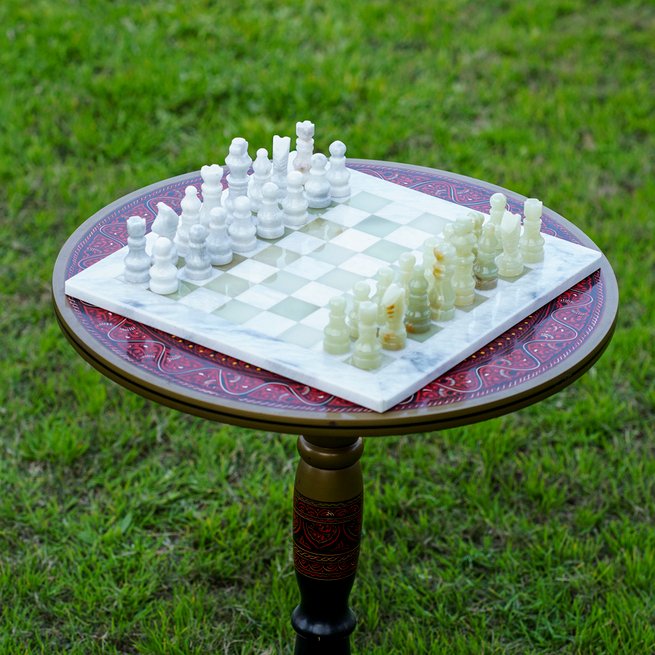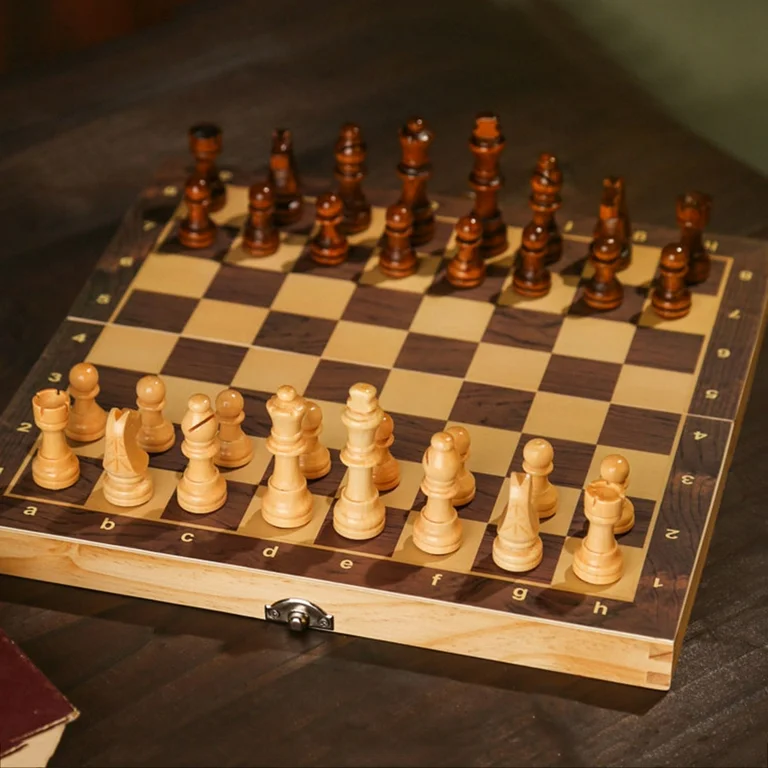
Introduction to Chess and Importance of Visual Learning
Chess, a game with a history spanning over a millennium, remains a timeless and intellectually stimulating pursuit. This ancient game is not merely a pastime; it is a rigorous mental exercise that offers numerous benefits. Learning chess can significantly boost cognitive skills, including memory, concentration, and logical reasoning. Moreover, engaging in chess enhances one’s problem-solving abilities, fostering the capacity to think several steps ahead and anticipate potential outcomes. These skills are invaluable, transcending the chessboard to benefit many facets of life.
Strategic thinking, a fundamental aspect of chess, encourages players to develop long-term plans while adapting to an opponent’s moves. This dynamic nature of the game makes it not only challenging but also deeply rewarding. However, mastering chess can be daunting, especially given its complexities. This is where the importance of visual learning comes into play. Unlike traditional methods of learning chess through books or textual explanations, visual learning tools, such as tutorial videos, provide a more effective means of understanding and internalizing concepts.
Tutorial videos are particularly beneficial as they offer a step-by-step visual guide to various chess strategies, tactics, and openings. These videos demystify complex moves and positions, making them accessible to both beginners and advanced players. Through clear demonstrations and explanations, viewers can grasp intricate ideas more easily and efficiently. The integration of visual aids enhances the learning experience, enabling learners to see and replicate moves in real-time, which is crucial for mastering the game.
Our latest tutorial video is designed to cater to chess enthusiasts at all levels. Whether you are just starting or seeking to refine advanced techniques, the video provides comprehensive coverage of essential strategies and moves. Viewers can expect to gain insights into powerful openings, effective defensive strategies, and critical endgame tactics. By leveraging the power of visual learning, this tutorial ensures that players can improve their chess skills systematically and enjoyably.
Key Chess Concepts Covered in the Video
In our latest tutorial video, we delve deep into essential chess concepts that cater to beginners and advanced players alike. The video begins with a thorough explanation of basic chess rules, including the board setup, piece movements, and the objective of the game. Viewers are provided with a solid foundation that is crucial for understanding more complex strategies.
Next, the video transitions into opening principles, emphasizing the importance of controlling the center of the board. Various popular openings such as the Ruy-Lopez and Sicilian Defense are discussed, with a focus on optimal piece placement and pawn structure. The video illustrates these principles through both theoretical explanations and historical games played by notable chess grandmasters like Garry Kasparov and Bobby Fischer.
Middle-game tactics are a significant portion of the tutorial. Key tactics such as forks, pins, and skewers are explained alongside practical examples. By breaking down famous chess puzzles and actual game scenarios, the video demonstrates how to utilize these tactics to gain a positional advantage. The segment is designed to enhance the viewer’s tactical awareness and pattern recognition, skills that are vital during this phase of the game.
The endgame strategy section is equally comprehensive. Fundamental concepts such as pawn promotion, king activity, and opposition are covered in detail. Classic endgame positions, including king and pawn versus king and the Lucena position, are dissected to showcase their dynamics. The video also references memorable endgames from historical matches, providing a contextual understanding of these strategies in real game situations.
Throughout the tutorial, viewers are introduced to specific techniques and patterns that are practically applicable. The video not only teaches theoretical knowledge but also offers actionable insights that players can apply in their own games. This structured approach ensures a holistic learning experience, making the transition from conceptual understanding to practical implementation seamless.
Step-by-Step Analysis of a Classic Chess Game
The video centers on a meticulous step-by-step analysis of a classic chess game between two renowned grandmasters. This iconic match, often revered in chess history, features Garry Kasparov and Anatoly Karpov during their 1985 World Championship encounter. The game’s significance lies in its demonstration of high-level strategic thinking and its notable influence on modern chess theory.
The analysis begins with an exploration of the opening moves, where Kasparov employs the Queen’s Gambit Declined, a popular and respected opening strategy. By detailing each move, the video clarifies how Kasparov aims to control the center of the board while maintaining flexibility. Simultaneously, Karpov’s responsive play is scrutinized, highlighting his defensive prowess and ability to retain positional balance.
As the game transitions into the middlegame, the video delves into the critical moments that defined the match. Viewers are guided through Kasparov’s daring knight sacrifice, a tactical maneuver designed to disrupt Karpov’s formation and gain a tempo advantage. This part of the analysis illuminates the importance of tactical vision and preparedness in chess. Each significant exchange and positional shift is dissected with a keen eye for detail, offering invaluable insights into the grandmasters’ thought processes.
The endgame phase is no less enthralling. Kasparov’s calculated perseverance and Karpov’s resilient defense come into sharp focus as the video scrutinizes their maneuvers. The final crescendo features Kasparov’s brilliant execution of a checkmate sequence, underscoring the culmination of strategic planning and tactical acumen. This comprehensive breakdown not only enhances appreciation for these chess legends but also solidifies the video as an educational tool for aspiring players.
Through this rich and thorough analysis, the video effectively bridges the theoretical concepts covered earlier in our blog post with practical, real-world examples. It provides a concrete understanding of strategic decision-making and underscores the significance of meticulous analysis in mastering the game of chess.
Tips for Practicing and Improving Your Chess Skills
Enhancing your chess skills requires dedication and structure, and consistent practice is paramount. To further your progress after watching our latest tutorial video, consider integrating these actionable tips into your routine:
Firstly, incorporating reputable online platforms into your practice can provide substantial benefits. Websites like Chess.com and Lichess.org offer a plethora of resources, including puzzles, game analysis, and the opportunity to play against opponents from around the globe. These platforms enable you to diversify your gameplay, exposing you to various strategies and styles.
In addition to online resources, delving into chess literature can enrich your understanding and mastery of the game. Books such as “My System” by Aron Nimzowitsch and “How to Reassess Your Chess” by Jeremy Silman are highly recommended for players seeking to deepen their strategic comprehension. These texts elucidate fundamental principles and offer insights that are crucial for both beginner and advanced players.
Practice exercises are also an integral component of skill improvement. Engage in targeted exercises that focus on specific aspects of your game, such as opening theory, middle-game tactics, and endgame techniques. Practicing these elements will ensure a well-rounded expertise.
Consistent practice should be complemented by playing against a variety of opponents. This not only tests your adaptability but also exposes you to different approaches and tactics. Review your past games attentively to pinpoint your strengths and areas needing improvement. Platforms like ChessBase can assist in thorough game analysis, enabling you to refine your strategies.
Finally, apply the techniques demonstrated in our tutorial video to your own games. Staying curious and passionate about learning more will propel your continued growth. Engage with the chess community through forums and discussion groups to exchange knowledge and stay abreast of emerging strategies.
By following these tips, you can steadily advance your chess skills and enjoy a more profound and rewarding chess experience.







